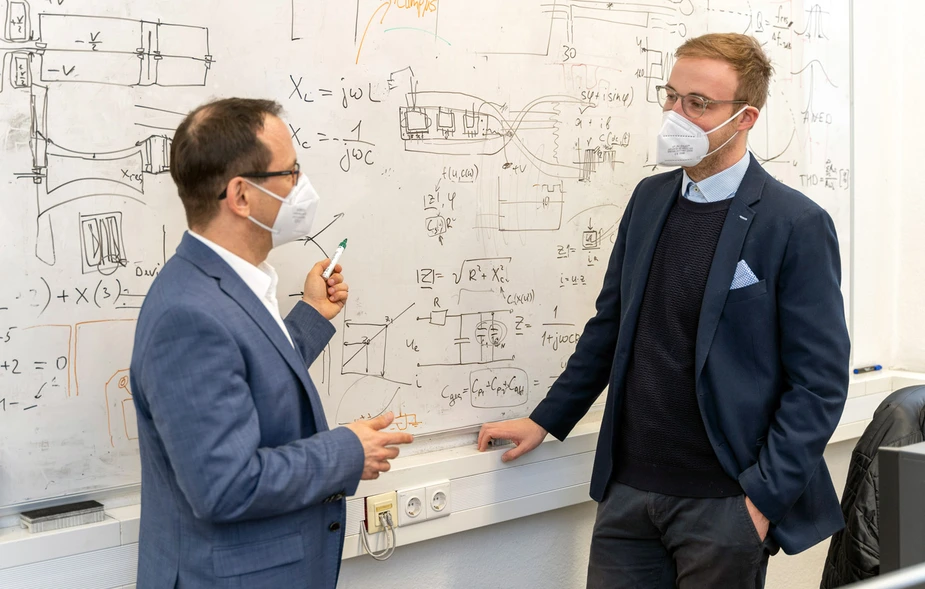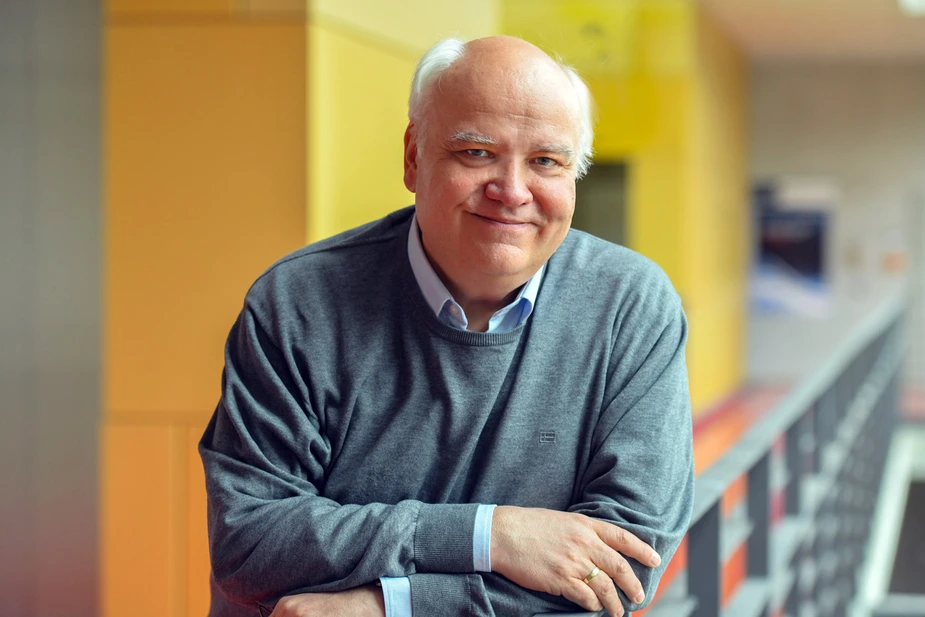A future made of light
“iCampus Cottbus”, a project supporting structural economic change in Lusatia, will create many advantages for Adlershof
The region was once the pacemaker of East Germany: There was a time when 200 million tons of coal were produced in Lusatia. A livelihood for about 100,000 people. Coal mining will be coming to an end in Lusatia by 2038, the latest. Fresh ideas are needed. One of these is the Innovation Corridor Berlin–Cottbus, which will also create great chances for Adlershof.
Lusatia is a region that is strongly affected by phasing out of coal. Still today, about 25,000 people work in coal production and coal-fired power production. The future of Lusatia, however, might be made of light.
“When you live in Cottbus, you tend to commute to work to Berlin, Wildau, Zeuthen, or Adlershof,” says Jonas Pantzer. “That’s why the innovation corridor idea is very important.” Pantzer is project manager of iCampus Cottbus, located at one of the poles of the Berlin–Cottbus innovation corridor. The campus is the very first project coming out of a federal government emergency programme dealing with structural economic change in coal regions.
It is planned to use innovation corridors to facilitate people moving to rural areas, to find prudent solutions for transportation, and, above all, to foster the knowledge exchange from science and research in this corridor. In the case of Lusatia, moving away from coal and towards light-based technologies. The use of light in research and industry as well as microsystems technology, two areas that are closely connected, are key technologies of the digital transformation. Their primary organs are sensors.
Launched in late 2019, the Innovation Campus Electronics and Microsensor Technology Cottbus—the so-called iCampus—aims at pushing forward innovation in sensor development together with small and medium-sized companies and to create new perspectives by transforming them into marketable products and services. To this end, Brandenburg University of Technology Cottbus-Senftenberg as well as Fraunhofer and Leibniz institutes have joined forces in iCampus. “90 percent of the businesses inside the corridor are small and medium-sized,” explains Pantzer. “Companies like these have little budget for research and development of their own. This is where iCampus comes into play.”
The FBH (Ferdinand-Braun-Institut, Leibniz-Institut für Höchstfrequenztechnik) also plays a part in two of the five projects—one dealing with developing an applications-focused laboratory dubbed “µ-Spektrum”, and one creating a radar system for cardiovascular monitoring at home. “The coronavirus pandemic bogged us down for a while but now we’re right in the middle of setting up shop in Cottbus,” says Bernd Sumpf, head of the Laser Sensor Lab at FBH, whose team is building an application laboratory for Raman spectroscopy in Cottbus.
Spectroscopic methods like these are used for high-precision analysis of mixtures of substances, capable of detecting a wide variety of substances—thanks to a signature as typical as a fingerprint. However, Raman signals are relatively weak and can only be visualised using sophisticated processes. The method developed by FBH is supposed to make devices smaller and easier-to-use—as well as drastically reduce costs. This would facilitate measuring beta carotene levels, which are important for assessing a person’s physical condition.
“We are now continuing our research with Thiem-Research GmbH at the Cottbus clinic,” says Bernd Sumpf. “Several companies from the region are interested in the results and cooperation.” High-quality health care in rural areas is at the heart of another project. The goal is to develop a mobile, compact, and contact-less heart radar to monitor patients, including newborns.
“The Adlershof–Cottbus innovation corridor is a pilot project,” says Jonas Pantzer. The corridor will create cooperation, co-working spaces, and start-up centres, which will be used jointly by a community. To Pantzer, iCampus is a type of showcase. “By putting our projects and experience out there, we help to nudge companies towards high-technology and present cooperation to the outside.”
To make it all happen, Pantzer is waiting feverishly for the double-track expansion of the rail line Lübbenau–Cottbus. This is scheduled to happen in 2026. Then, he hopes, that rail line will be become the “science train”, a fast and easy connection between Cottbus, Wildau, Zeuthen, Berlin’s airport and Adlershof. Lusatia Science Park, Pantzer is convinced, will create many advantages for Adlershof. “Adlershof is full. More space, easy accessibility, and high-skilled workers—this should be quite attractive for Adlershof’s Science City, too.”
Rico Bigelmann for POTENZIAL

